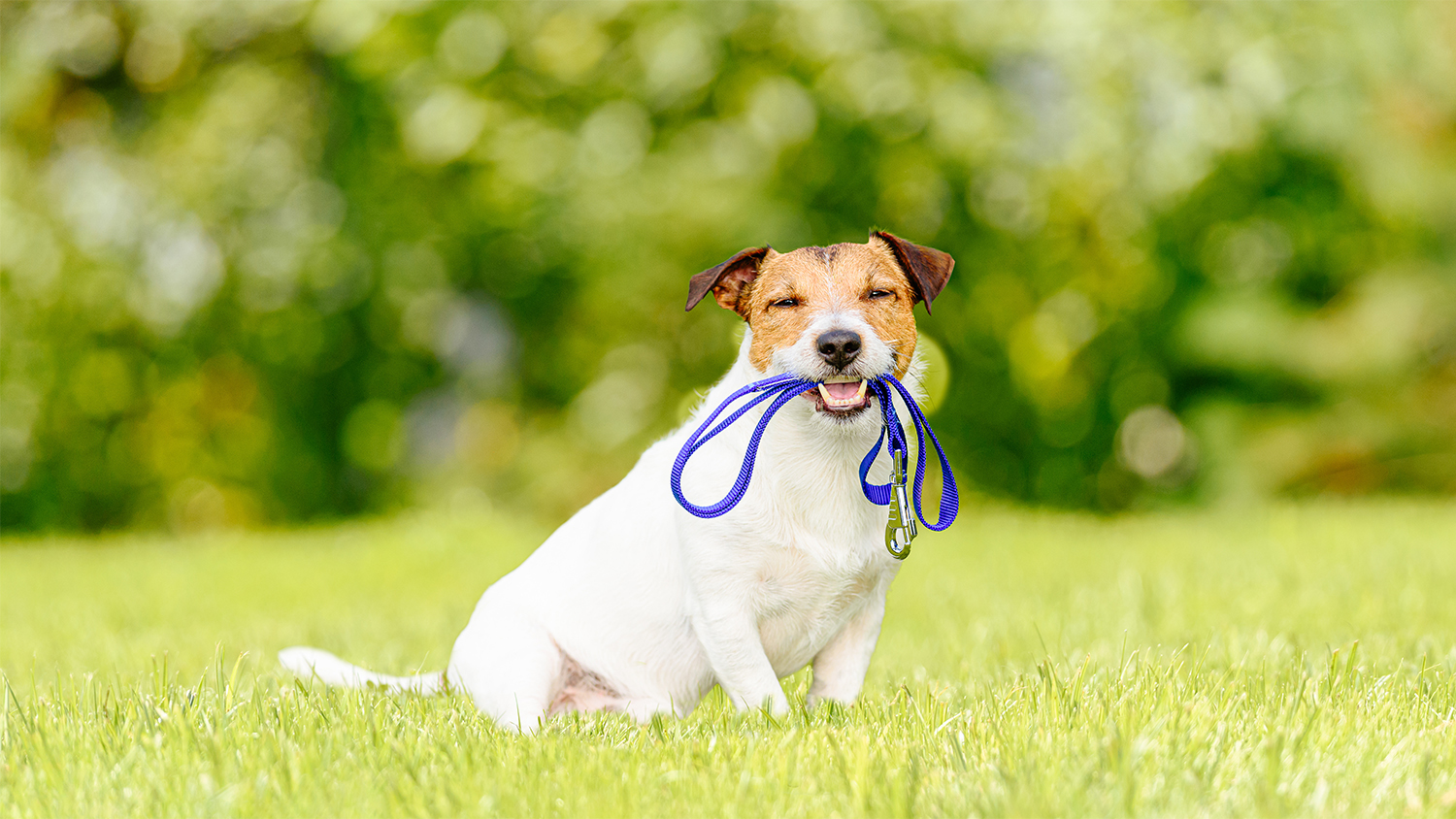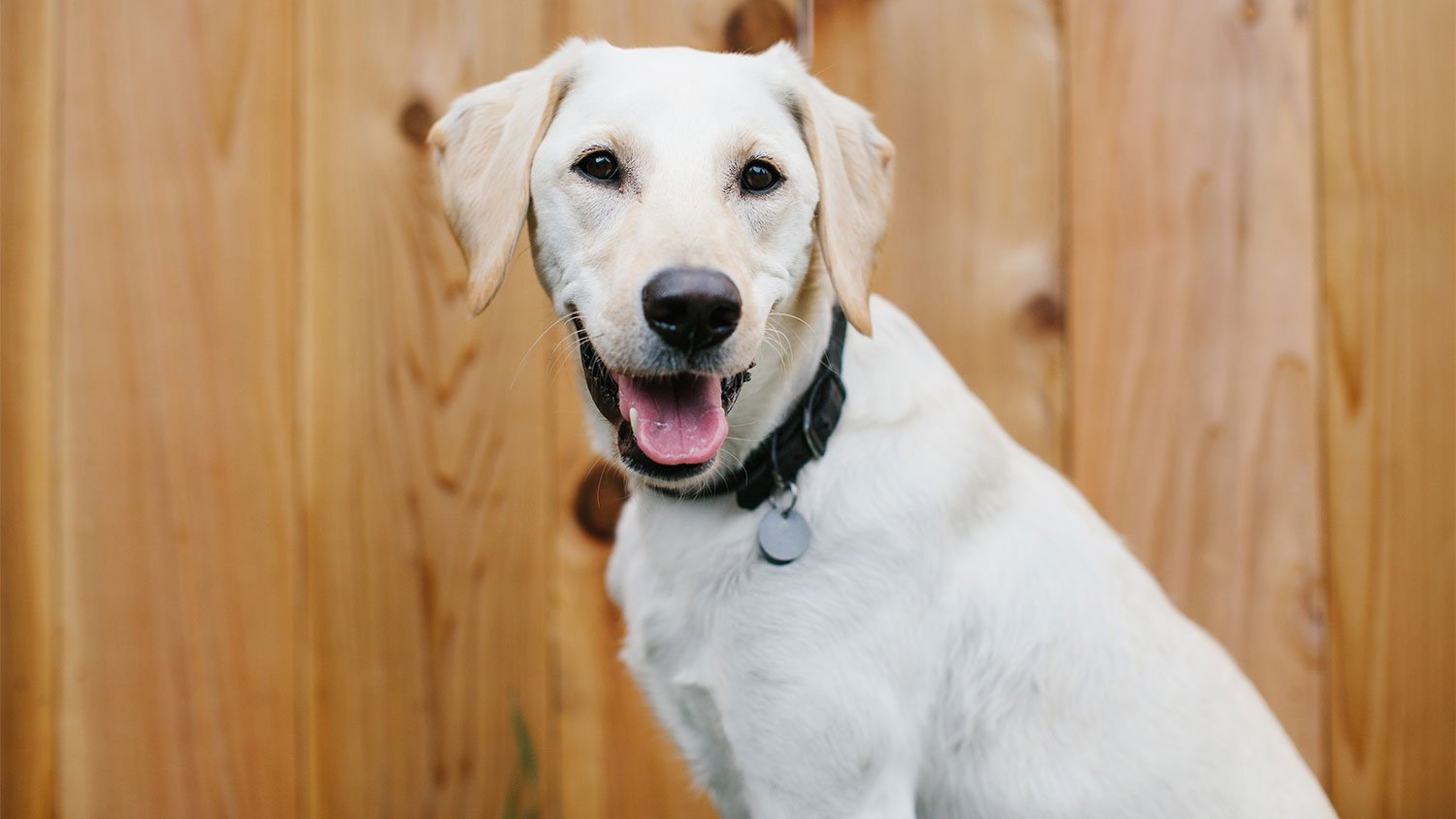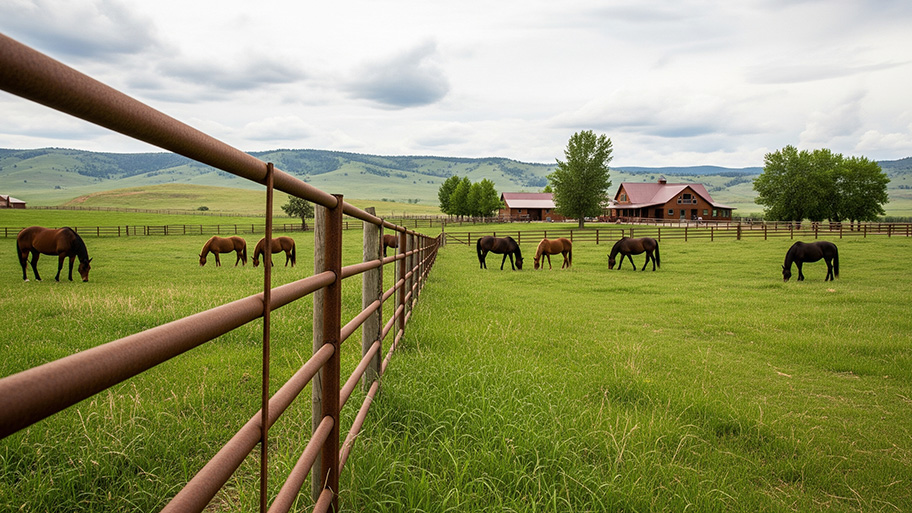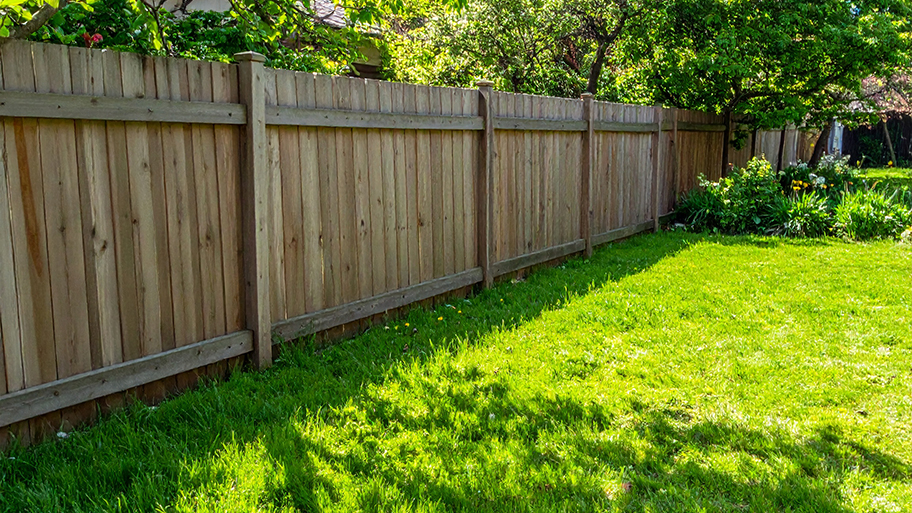
Find out the invisible fence installation cost. Learn about average prices, key cost factors, and tips to save on your pet’s safety solution.
Keep Fido from fleeing with these pet-friendly fences


When you have a dog, having a fence on your property is a good idea. A fenced-in yard lets your pup run around, play, and sniff all the smells, all while keeping them safe. Choosing the best fence for your dog ultimately comes down to your yard, your dog’s needs, and, of course, your budget.
With the cost to install a dog fence between $1,500 and $8,000, it’s important to do your homework before writing a check. Here are some of the best Fido-friendly fence options to choose from.

A chain-link fence costs $10 to $20 per linear foot. Sure, it might not do much in the way of curb appeal, but it’s affordable, easy to maintain, and an effective dog fencing option.
However, there are some drawbacks to consider with chain-link fencing. For one, any broken fence pieces can be a safety hazard that can cut or poke your pup. If your dog is a digger, they could also easily tunnel underneath the fence. If you choose a chain-link fence, inspect the perimeter of your yard regularly so your dog doesn’t get hurt or make an escape.
| Pros | Cons |
|---|---|
| Affordable | Your pet may climb over or dig under the fence |
| Durable | Not the most visually appealing option |
| Easy Installation | Can be a safety hazard |
Best for: Short-hair dogs who won’t get caught or tangled by the links and dogs who don’t climb or dig aggressively.
Many dogs dig out of boredom. If your pooch is trying to tunnel under your fence, providing plenty of exercise and stimulating playtime should help.

Vinyl panel fencing is easy to maintain, making it a busy homeowner's dream. It offers dense, solid protection around your yard that keeps out views and disturbances from the street. Its density means it’s durable—perfect for keeping your dog from sprinting after neighborhood squirrels.
Vinyl is often much less expensive to purchase and install than an option like wood fencing (the cost to install a vinyl fence is $10 to $30 per linear foot). You don’t have to worry about painting or sealing, either—a good power washing once a year should be everything you need to keep your vinyl fence sparkling.
| Pros | Cons |
|---|---|
| Can add shrubs to prevent digging | Higher cost |
| Resistant to scratches and urine stains | Low resistance to extreme weather |
| Safe for most animals | Can grow mildew, especially if you add vegetation at the bottom |
Best for: Suitable for most pets as long as you live in an area without extreme weather conditions.

Wood is a pricey fencing option (installing a wood fence costs $10 to $30 per linear foot), but it also adds classic charm to your yard and gives your pup a safe space to play safely.
When the wooden boards are placed solidly side-by-side, you won’t have to worry about your dog wiggling between the posts in pursuit of a smell. This will also keep other animals, like a passing bunny or neighborhood cat, from wandering into your yard. Wooden privacy fencing is also a great choice if your dog is a jumper—some active breeds can jump 6 feet high.
| Pros | Cons |
|---|---|
| Aesthetically pleasing with high customization possibilities | Dogs might be able to dig under the fence |
| The height prevents your pet from jumping over | Less resistant to scratches and chews |
| May increase property value | Loose nails can injure your pet |
Best for: Suitable for most dogs as long as your budget permits.

Metal fencing has become a popular choice for dog fencing due to its attractive, sleek look. Metal fencing with gaps or holes in the framework allows you to fence your entire yard without blocking views or creating a "closed off" look. However, it does come at a price. The cost to install wrought iron fencing is $25 to $35 per linear foot, while an aluminum fence costs between $7 and $32 per linear foot.
So, will a metal fence work for your doggo? It all depends on their needs. If your pup has a high prey drive, they might be a little too excitable for a wrought iron fence to keep them happy. These fences are also not ideal for small dogs who can wiggle out, or in the case of teeny-tiny pups like Chihuahuas, just walk out between the bars.
| Pros | Cons |
|---|---|
| A sleek look prevents potential hazards | An unobstructed view can be problematic for dogs easily excited or distracted |
| Can withstand harsh weather | Small dogs may squeeze through the openings |
| Chew-proof, dig-proof, and can handle more weight and pressure from your pet | May not be tall enough to prevent your dog from jumping over |
Best for: Medium-to-large dogs with a calmer temperament.

For a metal fence option that offers plenty of privacy for dogs and homeowners, corrugated metal fencing is a viable choice. It stands out for its longevity, low maintenance, and resistance to rust and weathering and features a vertical orientation. This design boasts increased security compared with its open-weave counterparts. A corrugated metal fencing costs between $17 and $90 per linear foot, putting it in the middle-ground cost range compared with other types of dog fences.
| Pros | Cons |
|---|---|
| Sturdy barrier that completely surrounds your property | Temperature sensitive and can burn your pet during hotter days |
| Nearly impossible for any dog to climb or jump over | Less soundproof |
| Low maintenance | Higher up-front cost |
Best for: Works with all dogs as long as you build it high enough.
On average, brick fencing costs $15 to $60 per square foot, and stone fencing costs $25 to $75 per square foot. Despite the much higher cost, there are many reasons why someone might opt for brick or stone fencing. Brick and stone fencing provide an attractive rustic look and can greatly enhance your property’s curb appeal and value.
It’s also extremely durable and can stand against extreme weather conditions. Unlike wood fences, brick and stone fencing also requires minimum maintenance once. Overall, they’re the best options if you need to build a beautiful and secure fence for your dogs. Other than the cost, brick and stone fencing comes with minimum concerns.
| Pros | Cons |
|---|---|
| Your dog cannot escape | High initial and repair cost |
| Extremely durable | May not work with a small home |
| Enhanced security and curb appeal | Heavier material may require additional footing |
Best for: It’s suitable for larger properties and works with any type of animal as long as the budget and space permit.

Invisible dog fencing costs $3 to $9 per linear foot. Hiring a local invisible fence installer might be your only option if your HOA has fencing rules or if you have a large property and don’t want to invest in the high costs of installing a traditional fence. Some areas are also simply not easily fenced, especially if it’s an area with rough terrain or many slopes.
However, there are several factors to consider. For one, these invisible fences deliver shocks to your dog. Some people have strong feelings about using invisible fences and don’t feel they are safe or humane for dogs.
This negative reinforcement can also lead to dogs associating boundary lines with punishment. And the shocks don’t always deter every dog. Over time, smart dogs may learn how the fence works and simply run across it, regardless of the shock. As a dog security fence, this may not be the best option. Plus, since there’s no physical barrier, other animals—and people—could easily walk onto your property.
| Pros | Cons |
|---|---|
| Zero blockage of the views | Doesn’t protect your property from outside animals and intruders |
| No need to install traditional fencing | Relies on physical, negative reinforcement to train your dog |
| Can be installed on steeper slopes and uneven terrains | Your dog can run across if it becomes resistant to the shock |
Best for: Only if you cannot opt for other traditional fencing options.

Picket fences are shorter than traditional fences, at 3 to 4 feet tall. It’s a good fit for you if your dog is calm and hasn’t shown an interest in escaping. Though visually pleasing, these fences are not enough to contain large dogs or dogs that love to run off whenever they can.
| Pros | Cons |
|---|---|
| One of the most affordable options | Larger dogs can easily jump over |
| Enhances curb appeal | Small dogs may squeeze through the gaps. |
Best for: Calm dogs who don’t want to escape or older dogs with less mobility.

Hog wire fencing is a good option if you don’t like the look and feel of chain link, but still need a low-profile fence to contain your dog. Hog wire fencing costs depend on the size of your yard, but are often less expensive than more traditional wood fencing.
| Pros | Cons |
|---|---|
| Lower cost than wood fencing | Not good for dogs that can jump |
| Non-obstructed view of your property | Little privacy may easily distract and excite some dogs |
| Durable and has easy maintenance | Not as aesthetically pleasing |
Best for: Calm dogs who aren’t prone to jumping.
To find the best fence for your dogs, you need to take into account several key factors:
Budget: On average, dog fence costs will range between $1,000 and $8,000. Certain options, like metal fences and wood fences, will cost more. Knowing your budget will help you find an affordable fence.
Yard Size: The size of your yard determines how much fencing you’ll need. A smaller backyard typically gives you more fencing options than a massive property.
Style: Some fence options, like vinyl and wood, come in various colors and finishes. Others, such as wrought iron fencing, may be more limited in color but provide more decorative elements.
Climate: Some fencing materials, like vinyl, are vulnerable to inclement weather. If you live somewhere with strong wind and storms, you won’t be able to use those types of materials.
Dog Size: Dog size determines how tall and what design your fencing should be. Larger dogs may jump over picket fences and some metal fencing, while smaller dogs can squeeze through the gaps easily.
Dog Temperament: Solid fences that block the view would work better with an active, playful dog, whereas fences with gaps require your dog to be calmer and not interested in wandering off.
From average costs to expert advice, get all the answers you need to get your job done.

Find out the invisible fence installation cost. Learn about average prices, key cost factors, and tips to save on your pet’s safety solution.

Pipe fencing is an extremely strong, durable option for containing horses and other livestock. This guide breaks down the factors that affect pipe fence cost.

There are many dog fence options, from tall privacy fencing to wireless underground electric fences. Here's how much it costs to install a dog fence.

Does your normally cool-headed dog go berzerk when they spot your neighbor’s pooch through a fence? Try these 10 tips to prevent dog fence fighting.

Frustrated by the neighborhood dogs continually sniffing around your garden? Check out these ideas for humane and handy dog repellents for lawns.

Keep your pet safe and secure by learning how to locate and fix breaks in an invisible dog fence with these step-by-step tips.